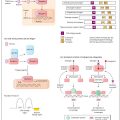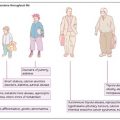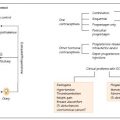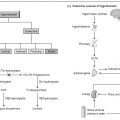Type 2 diabetes mellitus is a disease that is becoming more common in association with the increase in obesity in the population. The overall UK prevalence is around 2% of the population, rising with age, and is higher in certain ethnic groups including African–Caribbeans (around 5%) and South Asians (>10%). Diagnosis of diabetes depends on the demonstration of a raised non-fasting blood glucose of greater than 11 mmol/L. If there is doubt, a fasting sample should obtained. The guidelines for the diagnosis of DM are shown in Table 41.1. Impaired glucose tolerance is an important condition with a high risk of developing Type 2 DM and an increased risk of macrovascular disease compared to the normal population.
Treatment is of Type 2 diabetes is by dietary measures, lifestyle changes and oral hypoglycaemic agents where necessary. Although patients with Type 2 diabetes do not develop ketosis and do not require insulin for survival, some may be treated with insulin to optimize glycaemic control.
Type 2 diabetes mellitus is the most common form of diabetes, accounting for approximately 85% of diabetic patients. It is characterized by insulin resistance coupled with relative insulin deficiency. The mechanism of insulin resistance in Type 2 diabetes remains unclear. Although numerous genetic abnormalities of the insulin receptor have been identified, in some cases in association with profound insulin resistance syndromes, these are rare and do not explain hyperinsulinaemia seen in the vast majority of patients with Type 2 diabetes. The consequence of prolonged hyperinsulinaemia is the development of insulin deficiency. There is a strong genetic predisposition to Type 2 DM with high levels of concordance between identical twins and high prevalence in certain ethnic communities, particularly individuals of South Asian or African-Caribbean origin. However, environmental factors also play a key role, such that obese individuals have a much higher rate of insulin resistance and Type 2 DM.
Table 41.1 Diagnosis of diabetes mellitus and impaired glucose tolerance (WHO guidelines 1999)
Stay updated, free articles. Join our Telegram channel

Full access? Get Clinical Tree








